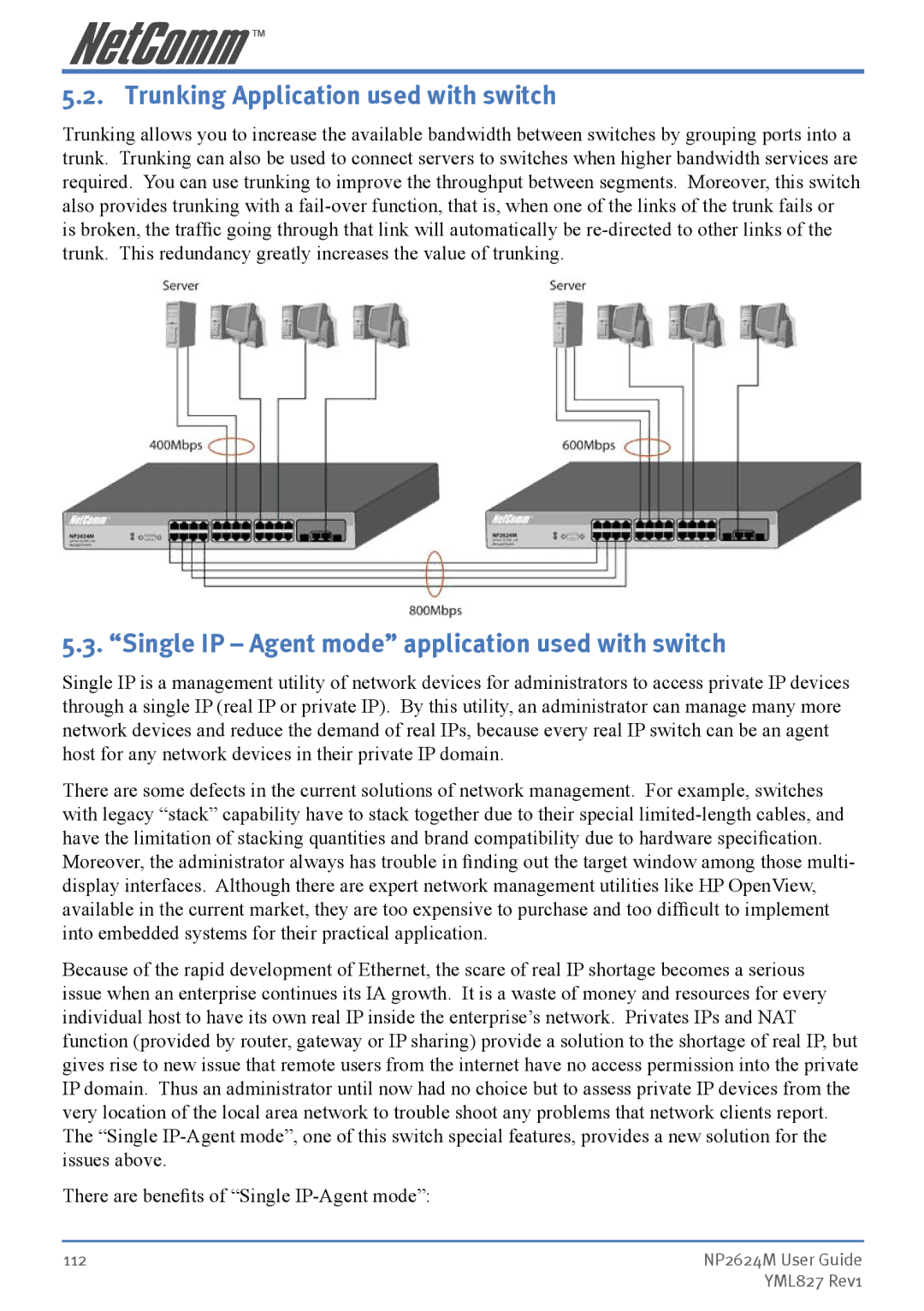
5.2. Trunking Application used with switch
Trunking allows you to increase the available bandwidth between switches by grouping ports into a trunk. Trunking can also be used to connect servers to switches when higher bandwidth services are required. You can use trunking to improve the throughput between segments. Moreover, this switch also provides trunking with a
5.3. “Single IP – Agent mode” application used with switch
Single IP is a management utility of network devices for administrators to access private IP devices through a single IP (real IP or private IP). By this utility, an administrator can manage many more network devices and reduce the demand of real IPs, because every real IP switch can be an agent host for any network devices in their private IP domain.
There are some defects in the current solutions of network management. For example, switches with legacy “stack” capability have to stack together due to their special
Because of the rapid development of Ethernet, the scare of real IP shortage becomes a serious issue when an enterprise continues its IA growth. It is a waste of money and resources for every individual host to have its own real IP inside the enterprise’s network. Privates IPs and NAT function (provided by router, gateway or IP sharing) provide a solution to the shortage of real IP, but gives rise to new issue that remote users from the internet have no access permission into the private IP domain. Thus an administrator until now had no choice but to assess private IP devices from the very location of the local area network to trouble shoot any problems that network clients report. The “Single
There are benefits of “Single
112 | NP2624M User Guide |
| YML827 Rev1 |
